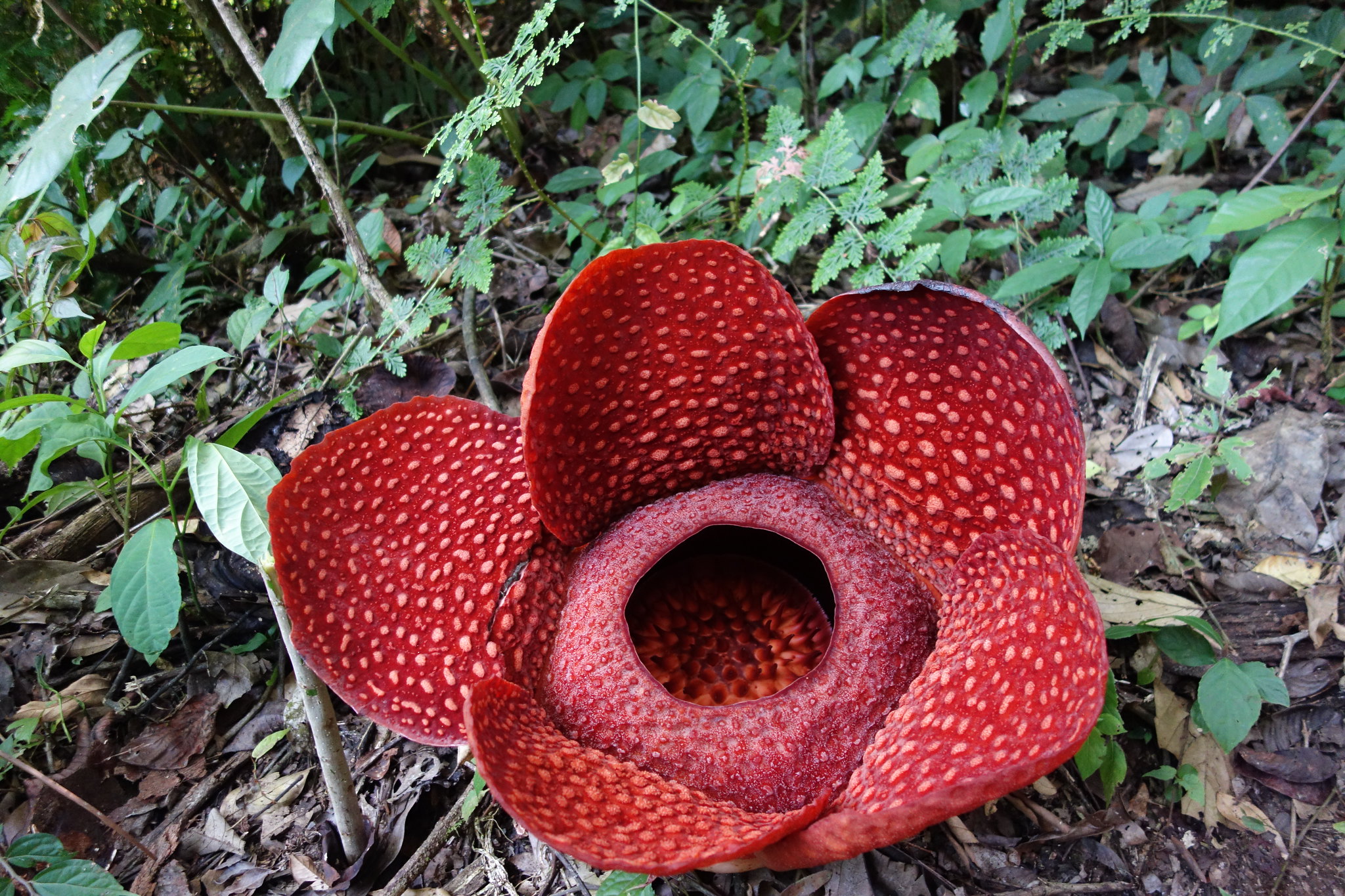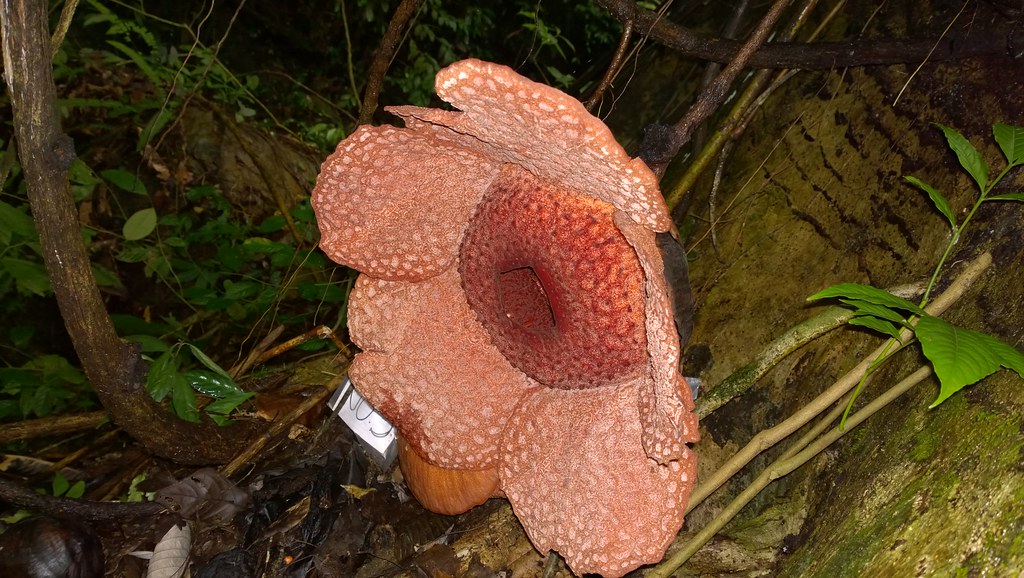Rafflesia are a family of parasitic plants that grow in Thailand, Malaysia, the Philippines and Indonesia. They have no leaves, roots, stems or leaves, growing as a parasite on Tetrastigma vines (they derive all their nutrition from the host - they do not photosynthesise). The bud grows for many months before finally flowering six to nine months later (the flower lasts around a week). Rafflesia are the largest flowers in the world. Around thirty species of Rafflesia are known.
The evolutionary line of Rafflesia diverged from Euphorbiaceae, which have tiny flowers, around 46 million years ago.
Rafflesia have two sister families, also parasites of Tetrastigma, Rhizanthes (four known species, two in Sumatra, one may be present near Bukit Lawang), and Sapria (three known species, none in Indonesia).
The eight Rafflesia species, plus a further subspecies, known from Sumatra are:
- Rafflesia arnoldii (across Sumatra) and Rafflesia arnoldii var atjehensis (north Sumatra) - the largest Rafflesia species, and hence the largest flower in the world
- Rafflesia bengkuluensis (known from South Sumatra)
- Rafflesia gadutensis (known from Western Sumatra)
- Rafflesia hasseltii (known from West Sumatra)
- Rafflesia lawangensis (North Sumatra - named for Bukit Lawang, where it was discovered)
- Rafflesia meijeri (known only from Parbuluan, west of Lake Toba)
- Rafflesia micropylora (north Sumatra)
- Rafflesia rochussenii (known from Mount Leuser, Sumatra, and Mount Salak, Java)
Apart from the large flowers, the other notable characteristic of Rafflesia (as well as Rhizanthes and Sapria) are their foul smell, which is intended to attract flies, which are the pollinators for Rafflesia flowers. Rafflesia are NOT carnivorous plants - the smell is only to attract pollinators, the flies are not eaten by the plant.
Within the National Park, R. micropylora is common at Batu Katak (40 minutes drive from Bukit Lawang). Rafflesia arnoldii var atjehensis is known from Lokop, Aceh, R. arnoldii is also reported, Rafflesia rochussenii from Gunung Leuser itself, while the type species for R. lawangensis is found in Bukit Lawang.

This is a Rafflesia arnoldii, photo taken 24th July 2013, near Bukittinggi, in West Sumatra (not near Bukit Lawang). You can see key features of the species - a large flower, with large warts interspersed by smaller warts on the perigon lobes (petals). The aperture (opening) is wide, around 2/3 of the width of the main body of the flower. The diaphraghm (around the aperture) has many warts.

This is a Rafflesia micropylora, from Ketambe, 60km from Bukit Lawang. You can very easily see the key feature of the species, the 'micropylora' or narrow diaphraghm opening. Large bud to the left.

This appears to be another R. micropylora, from Batu Katak 20km from Bukit Lawang. This specimen has a relatively wider aperture for the species.(Bud visible, bottom left)

This is a Rafflesia lawangensis, photo taken 2005 at Bukit Lawang. As you can see, the flower has a very open aperture in comparison to R. arnoldii, and the diaphragm lacks warts. It is very different from other Rafflesia species in Sumatra.